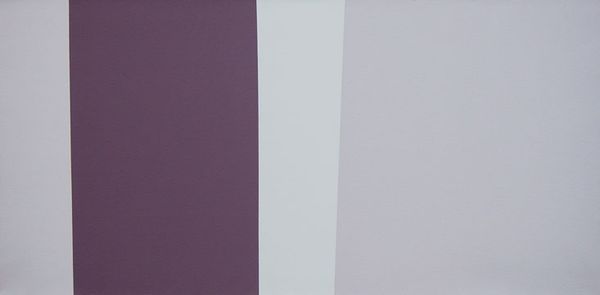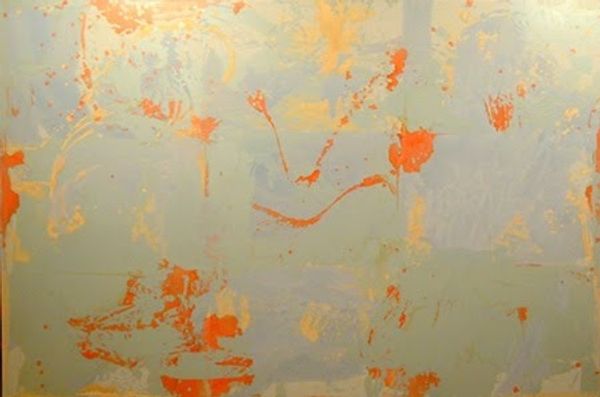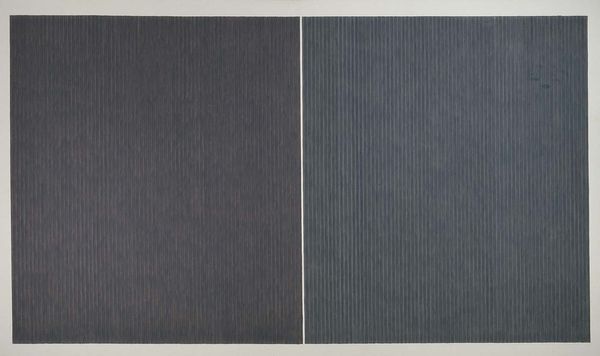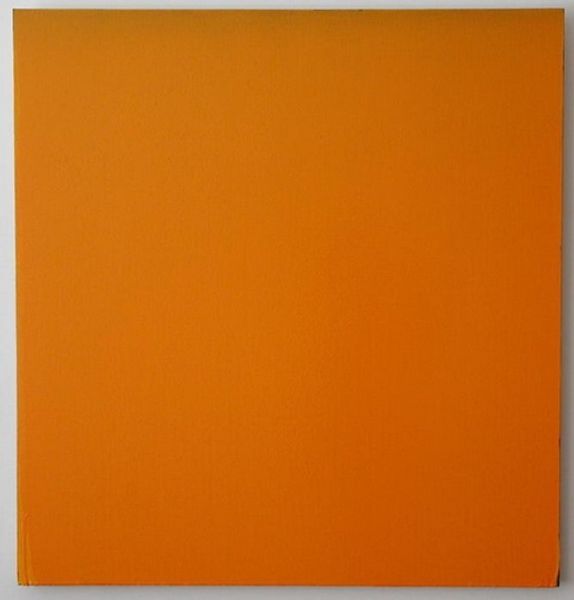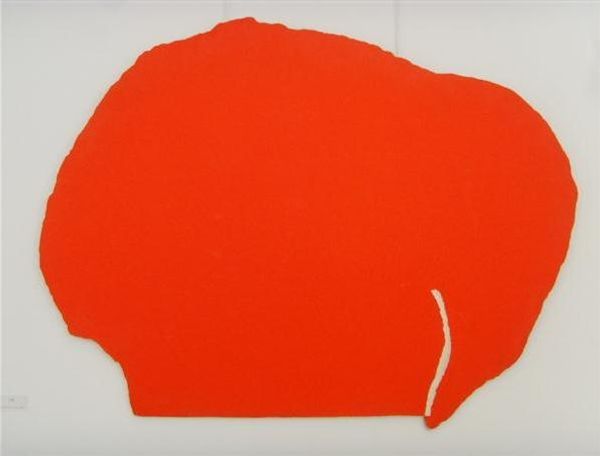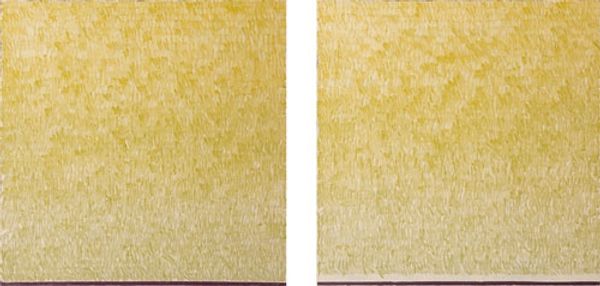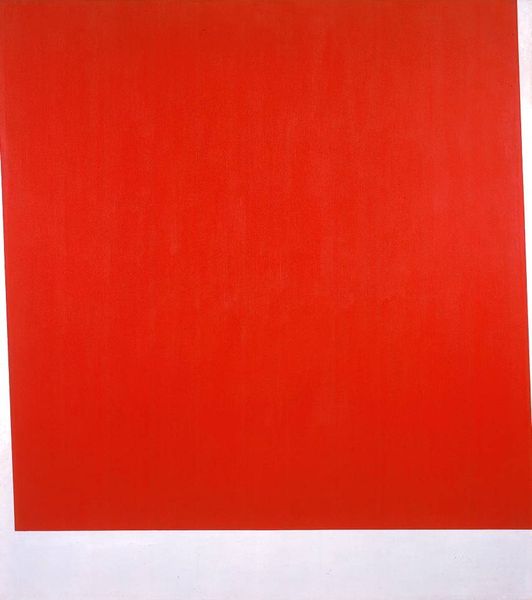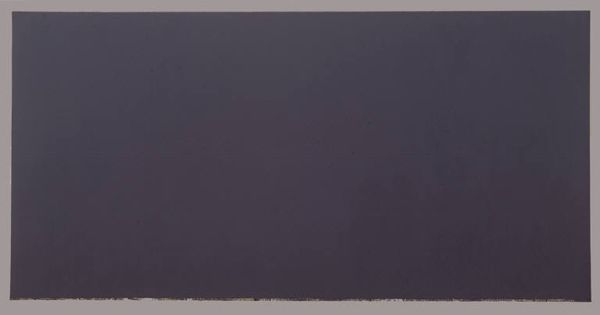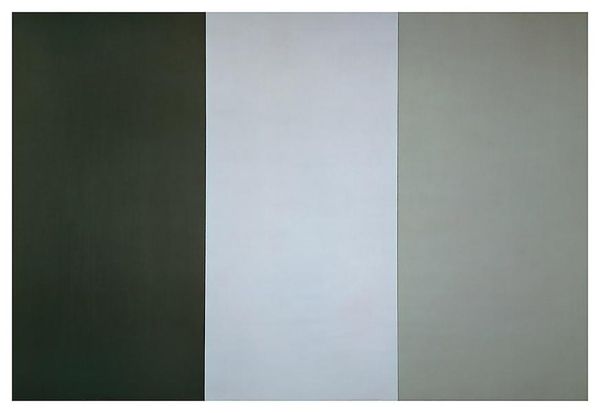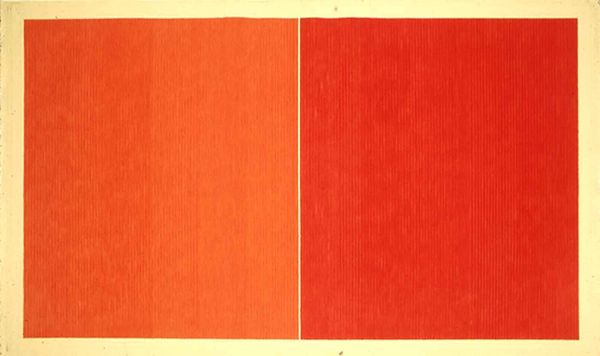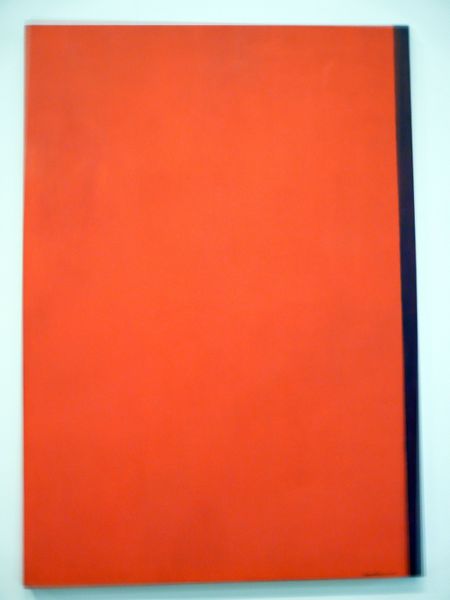
acrylic-paint
#
abstract expressionism
#
abstract painting
#
minimalism
#
op art
#
colour-field-painting
#
acrylic-paint
#
geometric-abstraction
#
abstraction
#
line
#
abstract art
#
hard-edge-painting
Copyright: Peter Joseph,Fair Use
Editor: This piece is an "Untitled" artwork crafted in 1967 by Peter Joseph, rendered in acrylic paint. I find the blocks of color almost confrontational; the surface seems almost aggressively flat. What catches your eye? Curator: Well, considering Joseph's focus, I'm drawn to the *act* of painting itself, not merely the visual result. We should ask: how does the material--acrylic paint--and its application affect our experience? What kind of labor and resources went into making this 'simple' composition? The industrial quality of acrylic in '67 speaks volumes, doesn't it? Editor: It does seem far removed from traditional oil paints. Does the lack of texture, or evidence of the artist's hand, tell us anything? Curator: Absolutely! It’s not about the artist's 'genius' or skill but about the properties of the material, its availability, its cost, and its cultural significance. Mass produced color. Also note, Hard-Edge painting rejected Abstract Expressionism's gestural approach, emphasizing instead sleek, flat surfaces. The choice of acrylic amplifies that, it flattens both image and hierarchies within art making. Where do you think that placed art, relative to labor and consumer culture? Editor: I guess that by demphasizing the 'artist's hand' he's kind of leveling the playing field between art and mass-produced commodities. Like, is there REALLY such a difference between making art and producing things we consume every day? Curator: Precisely. Joseph forces us to question the constructed divide. And we need to consider that "high" and "low" art can’t exist in silos; rather, everything relates to flows of capital, of resources, and of labour. Editor: I never really thought about minimalism from this perspective! Thank you. Curator: My pleasure. Reflecting on the art from this point challenges us to deconstruct conventional understanding of art and understand artmaking as a socio-economic system.
Comments
No comments
Be the first to comment and join the conversation on the ultimate creative platform.

